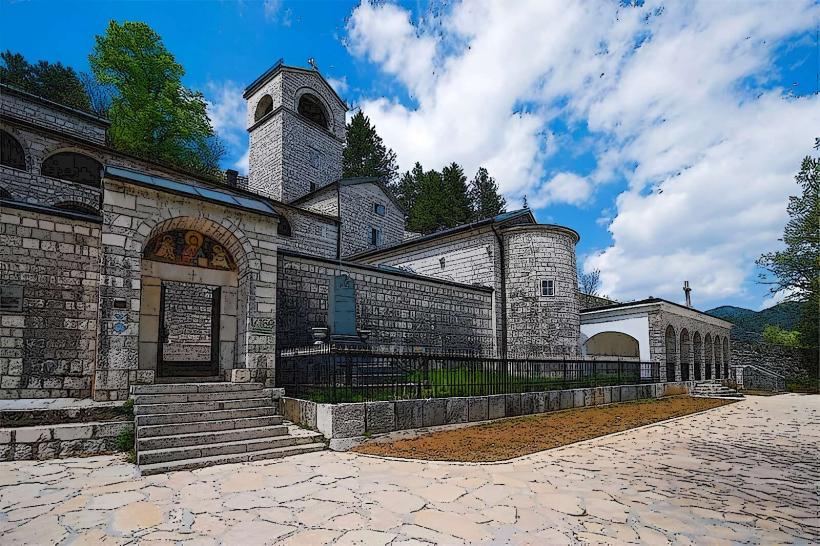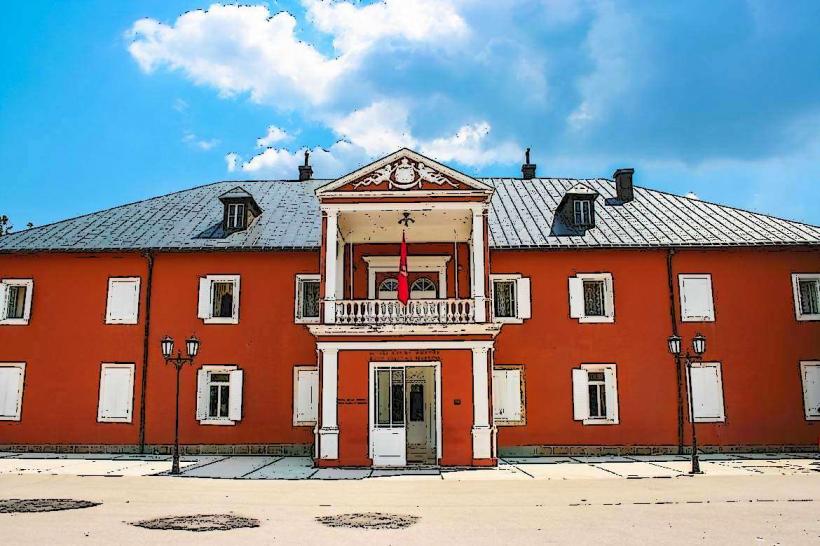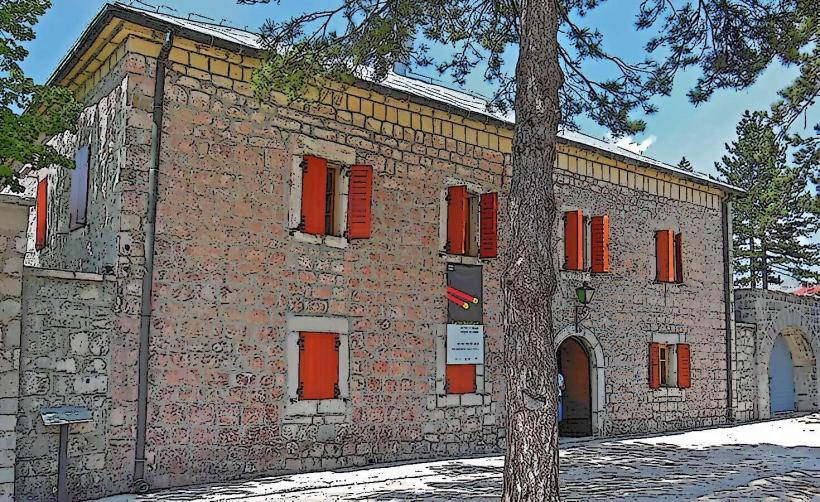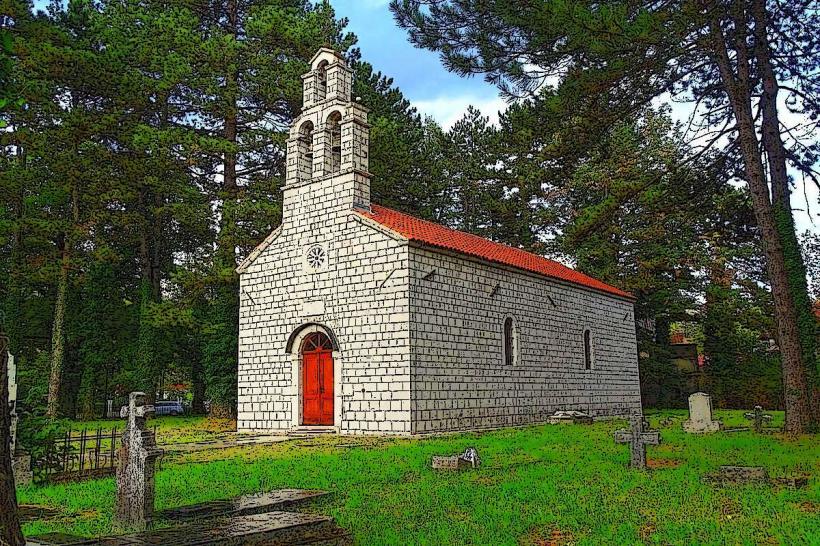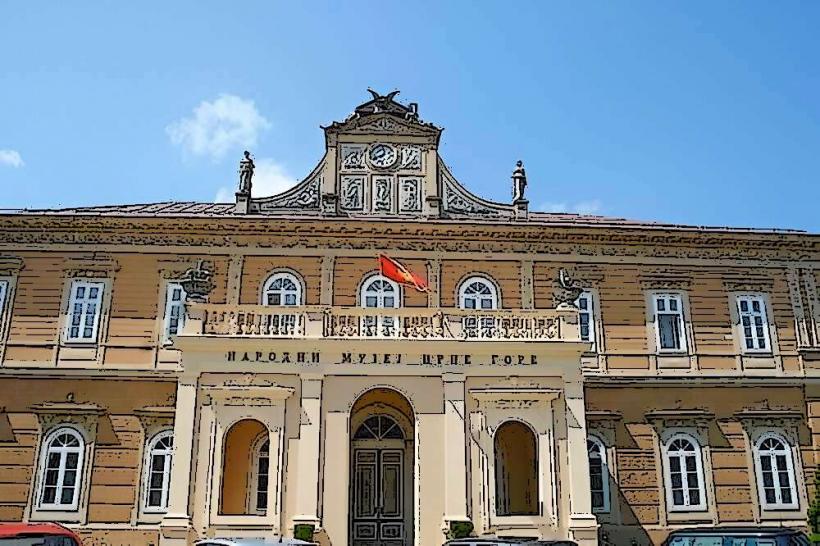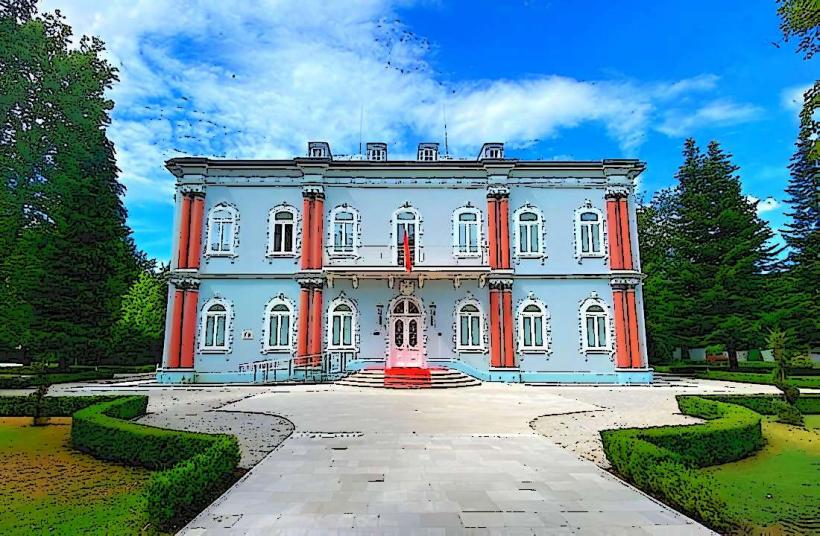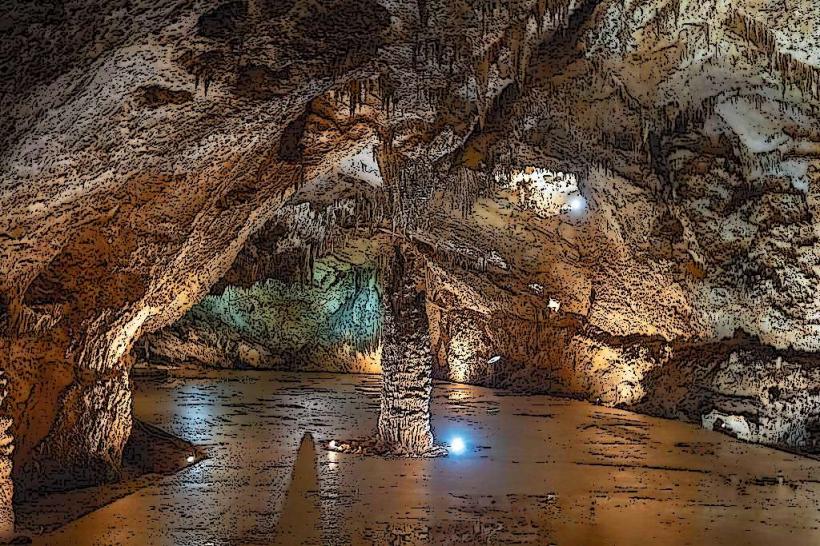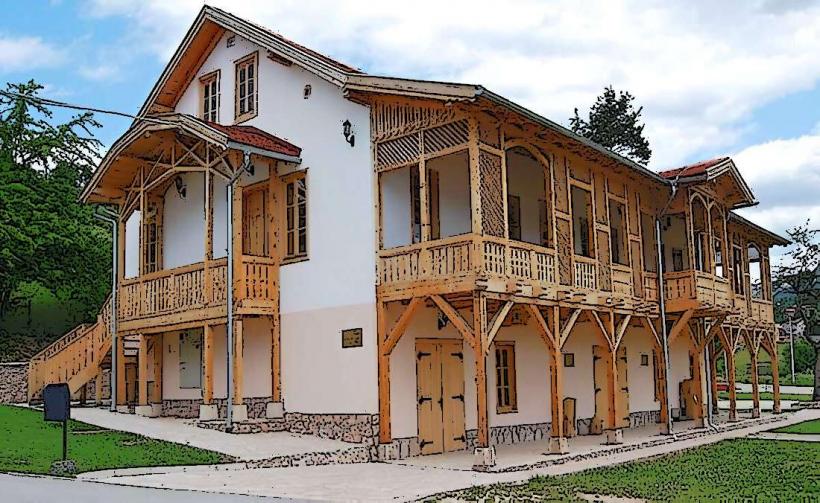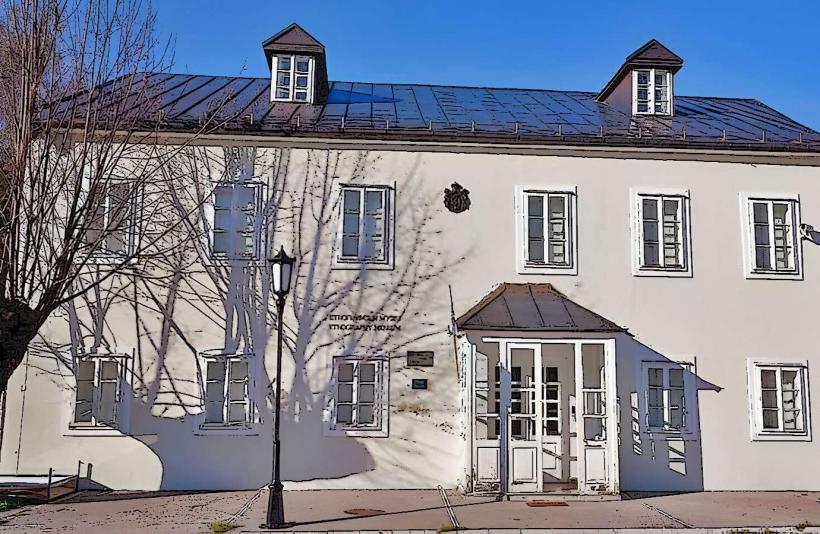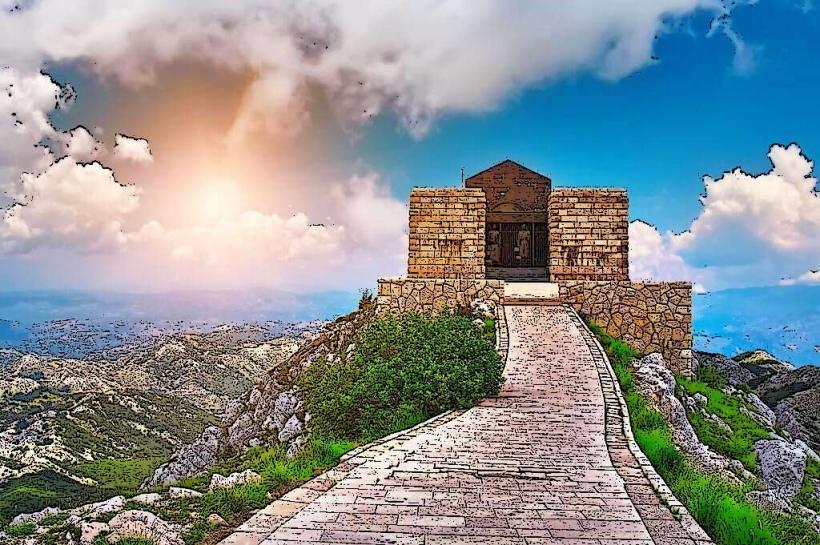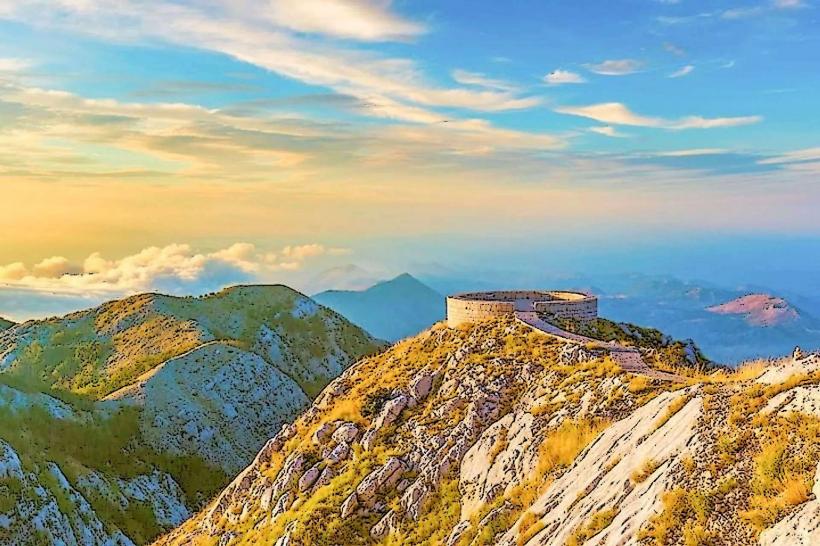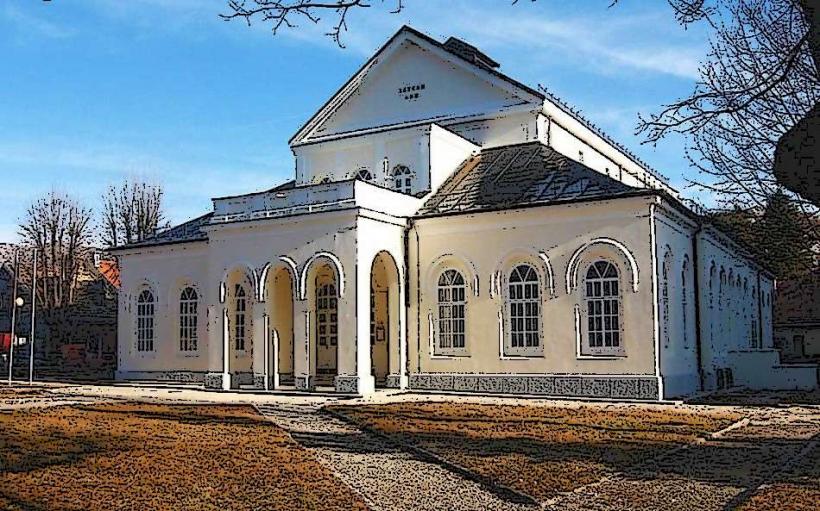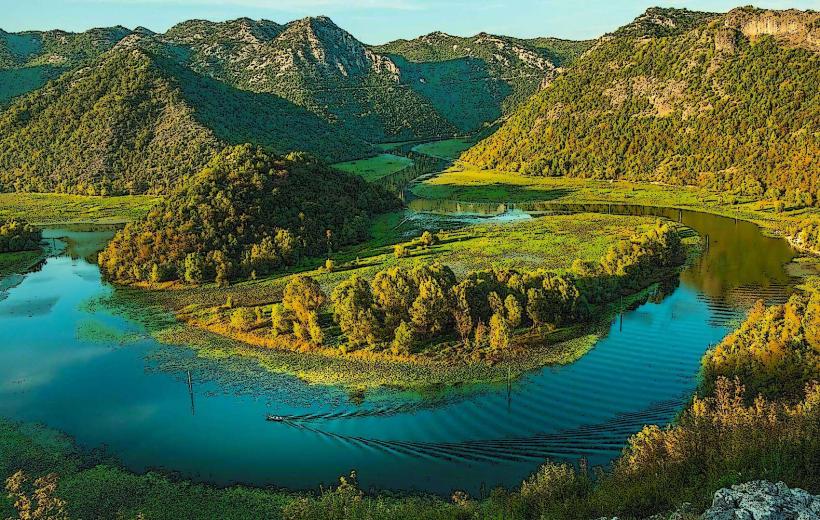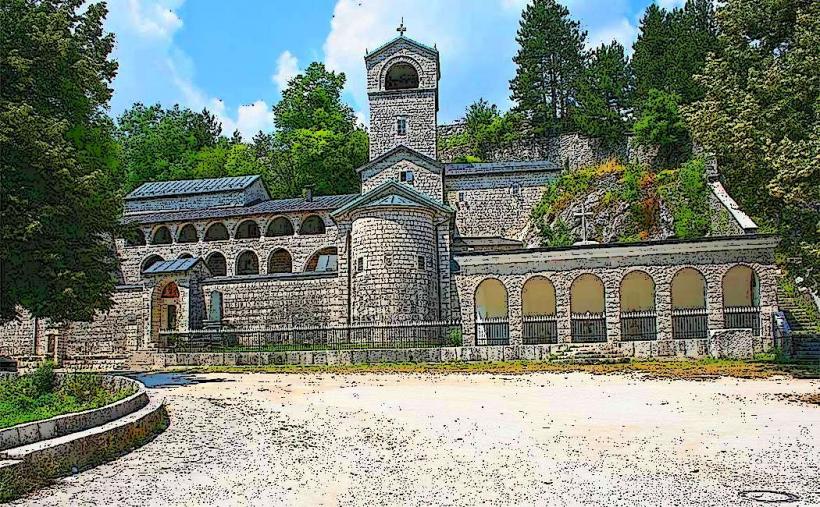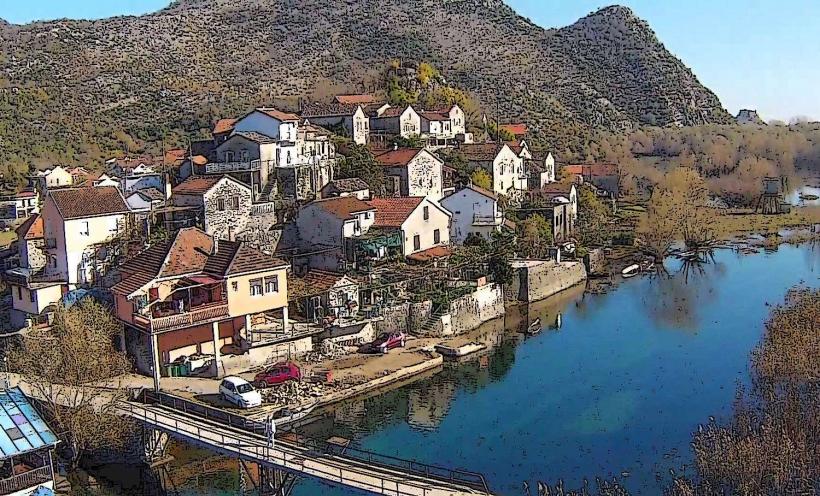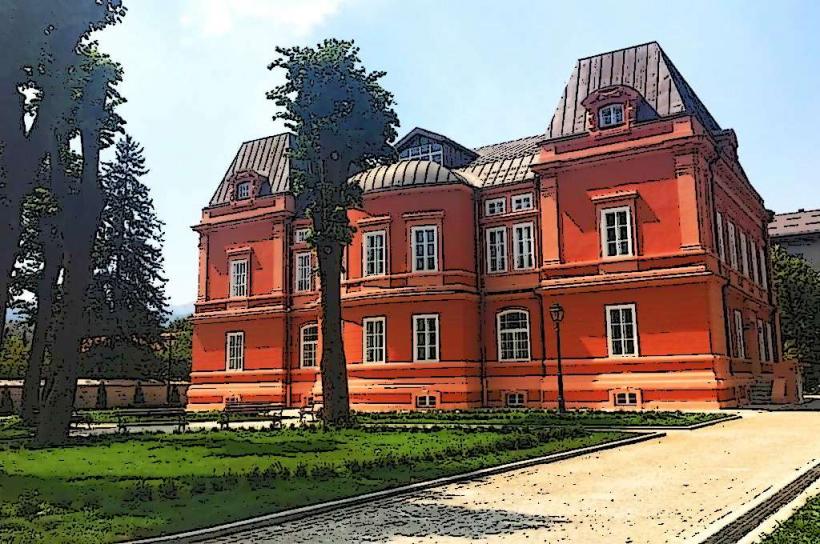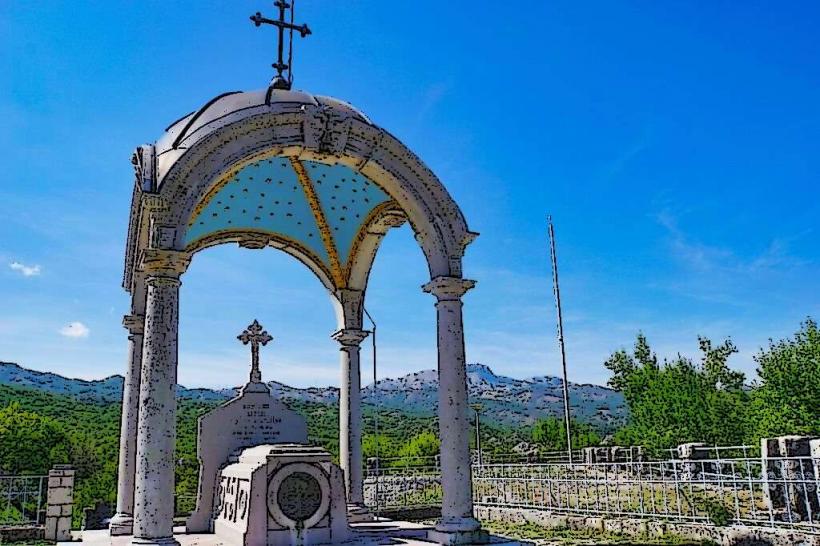Information
City: CetinjeCountry: Montenegro
Continent: Europe
Cetinje is a historic town located in the central part of Montenegro, often referred to as the country's "Old Royal Capital." It holds great significance in Montenegro's history, culture, and politics. Surrounded by the rugged mountains of the Lovćen range, Cetinje is a symbol of Montenegrin heritage, known for its stunning natural beauty, rich history, and as the center of Montenegrin culture.
Geography and Climate
Cetinje is situated at an elevation of about 700 meters (2,300 feet) above sea level, nestled in a valley surrounded by the Lovćen National Park. The town is approximately 36 kilometers (22 miles) from the Adriatic coast and about 17 kilometers (10 miles) south of the capital, Podgorica. The climate is Mediterranean, with hot, dry summers and mild, wet winters. The surrounding mountains add to its beauty, offering breathtaking views and hiking opportunities.
History
Cetinje has been the political and cultural center of Montenegro for centuries. The town's history dates back to the 15th century, but its significance as the capital of the Montenegrin state began in the 16th century. In 1484, Ivan Crnojević, the ruler of Zeta (the medieval precursor to Montenegro), established Cetinje as the seat of his court and the capital of his small principality.
Under the Crnojević dynasty, Cetinje became a spiritual center as well, with the establishment of the Monastery of Cetinje in the 15th century, which remains a key religious site today. Throughout the centuries, Cetinje was often at the forefront of Montenegrin resistance against foreign powers, particularly the Ottoman Empire, and it played a crucial role in maintaining Montenegro's independence.
The town became the capital of the Kingdom of Montenegro in the 19th century, and it remained so until 1918, when Montenegro joined the Kingdom of Serbs, Croats, and Slovenes (later Yugoslavia). Despite the political changes, Cetinje retained its cultural importance and remains one of Montenegro's most revered towns.
Cultural and Historical Significance
Cetinje is deeply intertwined with the cultural and religious history of Montenegro. The town is home to numerous churches, monasteries, and museums that reflect Montenegro's long and proud history. Notable sites include:
- Cetinje Monastery: Founded in 1484 by Ivan Crnojević, the monastery is an important religious and historical symbol for Montenegro. It houses relics of the country’s saints and has been a site of pilgrimage for centuries.
- The King’s Palace (Biljarda): Built in the 19th century, this palace was the residence of Prince Danilo I and later King Nikola I, the last monarch of Montenegro. It is now a museum showcasing Montenegrin history and the royal family.
- The National Museum of Montenegro: A major cultural institution in Cetinje, the museum is dedicated to the history, culture, and art of Montenegro. Its collection includes archaeological finds, medieval art, and items of historical importance from the time of the kingdom and republic.
- The Royal Theater (Narodni teatar): A historic theater, founded in the 19th century, which continues to host performances today, showcasing Montenegrin culture and arts.
- The Embassy of Russia: Built in the 19th century, it is a symbol of Montenegro's close relationship with Russia during the royal period. The building now houses a museum dedicated to the history of the Russian-Montenegrin connection.
Architecture
Cetinje’s architecture is a mix of medieval, Ottoman, and European influences. The town retains much of its 19th-century character, particularly in its central square and the area around the former royal palace. The architecture reflects Montenegro’s history as a small, independent kingdom, with numerous government buildings, churches, and palaces showcasing a blend of European and traditional Balkan styles.
The Cetinje Monastery is one of the town’s most significant architectural landmarks, with its white stone façade and impressive bell tower. The King’s Palace, with its neoclassical and Venetian influences, stands as a symbol of the town’s royal past. The old town area of Cetinje is a beautiful example of Montenegrin urban planning, with tree-lined streets, quaint squares, and colonial-era architecture.
Nature and Surroundings
Cetinje is surrounded by the Lovćen National Park, one of Montenegro’s most important protected areas. The park is home to Mount Lovćen, a prominent peak in the region that offers breathtaking views of the surrounding landscape, including the Bay of Kotor and the Adriatic Sea. The Lovćen mountain range is also known for its rich biodiversity and hiking trails.
The town itself is located at the base of the mountain, with scenic vistas of forests, hills, and valleys. Cetinje serves as a gateway for outdoor enthusiasts seeking to explore the natural beauty of Montenegro. Hiking, cycling, and nature walks are popular activities in the area, with well-maintained trails leading through the park’s diverse landscapes.
Economy and Tourism
Cetinje is not a major economic center in Montenegro, as it is smaller and more focused on tourism and culture. However, it is an important destination for visitors seeking to explore Montenegro's history, culture, and natural beauty. The town’s economy is largely driven by tourism, with visitors coming to see its historical sites, explore the surrounding mountains, and learn about Montenegro’s royal and cultural past.
In addition to tourism, Cetinje has a local population involved in agriculture, particularly in the surrounding valleys, where fruits, vegetables, and wine are produced. The region is known for its production of high-quality wine, and there are several vineyards in the area.
Transportation
Cetinje is easily accessible from Podgorica, Montenegro's capital, which is about a 30-minute drive away. The town can also be reached from the coastal city of Kotor, which is approximately 40 kilometers (25 miles) away. While Cetinje is not directly on the Adriatic coast, it is well-connected by road to Montenegro’s major cities and attractions.
Public transportation is available to Cetinje, but most visitors prefer to drive or take taxis due to the town's proximity to other major tourist destinations in Montenegro. Cetinje's airport is small and mostly used for local flights, so most international visitors arrive through Podgorica Airport or Tivat Airport.
Conclusion
Cetinje is a town that offers a unique blend of history, culture, and natural beauty. As the former royal capital of Montenegro, it holds deep historical significance, with its monasteries, museums, and royal residences serving as a testament to Montenegro’s rich past. The stunning backdrop of the Lovćen mountains, combined with the town's charming architecture and cultural institutions, makes Cetinje a must-visit destination for anyone interested in Montenegro's heritage. Whether exploring its historical sites, hiking in the nearby mountains, or simply soaking in the town's serene atmosphere, Cetinje offers a glimpse into the heart of Montenegro’s identity.

